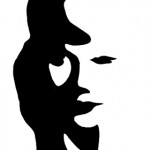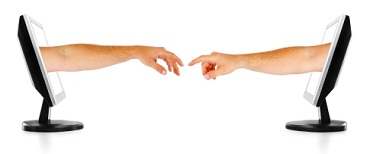What is now proved was once only imagined
– William Blake
In the brilliant (alas, cancelled) Forever series, Episode 17: Social Engineering, Detective Jo Martinez, and her ME Dr Henry Morgan are called to the apartment of a young murder victim whose flat switches itself on whilst they are there. The morning radio comes on, the coffee maker starts to percolate, the heating switches on, and the blinds open, all controlled by an alarm on the victim’s phone.
The victim turns out to be a Faceless hactivist who hacks into Times Square’s billboards to play footage of politicians behaving badly, and into New York City’smunicipal systems to alter everything from traffic lights to residents database information. So, it makes sense he would wire up his creature comforts to make his flat more ambient. The only downside, according to the NYPD cybercrime unit, is that his network was hacked. Someone logged in to turn on his boiler and cut the pilot light, which resulted in his being gassed. Murder by remote control.
The story might be fiction, but in reality, having a wired flat is very much a reality. According to the US Federal Trade Commission there are around 25 billion devices connected to the Internet which will double by 2050.
These devices are available in every context from heart monitoring implants to field fire-fighting search and rescue operations. Each device collects data and then autonomously flows the data between other devices using APIs, data formats and network protocol stacks in order to improve overall performance.
It sounds complex, but when coupled with a familiar device like a coffee machine and resulting nice ambiance, Mmm smell the coffee, the result is one of simplexity – an emerging theory which balances the need for simplicity and complexity, and the design focus for the future of the Internet of Things (IoT).
In June this year, Wired magazine produced a supplement about the connected home, 30-odd pages full of futuristic devices that are already on the market and connect to the IoT. A few of my favourites were:
- The Triby Fridge Memo, an e-ink display you put on the fridge and when you write on it, it sends messages to the rest of the family.
- The smarter am app which will customise your coffee, so if your fitness tracker says you slept badly, it will make you a double espresso to get you up and at ’em.
Gimmicks aside (cocktail mixer and fizzy water dispenser, yes please), a really useful one is the CO2 detector which in the event of an emergency would talk to you, your thermostat, and turn off your boiler.
The biggest problem us consumers have is deciding who will look after our smart homes. Is it Google with Nest? Or Apple and its golden handcuffs of proprietory software? Shame really, as these simplex gadgets have been around for many years just waiting on an industry standard to allow them to talk to each other.
But, it is not just the devices in this ambient intelligence interestingly enough which need monitoring, it is us humans. HCI designers have been saying for years the human is a factor in the design. With IoT, this is truer than ever before. Humans become devices to be monitored.
One way is with physiological computing. The physiology of a human is monitored and used as input to a system. So, if you arrive home and are a bit hot, your home might turn the heating down. Or, a computer game could modify its level of difficulty according to the amount of times you shake the controller in frustration.
Feeling wired: The human as a thing
Recently, Douglas Coupland asked in the FT: How much data am I generating? Involuntarily and otherwise. Everywhere we go, we generate data with Oyster cards and shopping bills at Tesco. Coupland wonders which algorithm is at work mining away in some big data pool in order to learn everything about us. His main fear is that it will all be monetised and we will end up being part of some sort of pay-per-click click junkies.
Ironically when I reread Coupland’s article online, it kept asking me if I wanted to tweet a quote. And, often when signing up for something online, I am asked to share this with friends on Facebook. Just imagine a wired house of consumer products: You’ve just left a note on the Triby Fridge Memo, share this with your friends. Your coffee is a double espresso today, tweet this to your boss. Gah!
But, it is not just posting online which causes oversharing and potential security risks. Many people don’t change the settings on their new devices when they bring them home. So, devices are left to broadcast openly across the Internet which allows a would be burglar to scan local IP space and then gain access to footage of people at home, build up a pattern of behaviour and then break in, when everyone is out. To say nothing of the virtual visitors who tiptoe around and tamper with your systems when you are at home.
But even those humans who change the passwords on their devices, might still write their passwords on post-it notes and stick them somewhere everyone can see them, or worse still, use the same password everywhere. Designers know that humans are the weakest link in any system, which is why biometrics are being proposed as the way forward. If we use what humans have already it will be less painful than implanting chips under our skin or needing to remember our wearables.
We are all unique
We are all unique, well, not really, our fingerprints, contrary to popular belief, are not unique identifiers, but the retinal scan has an error rate of 1 in 10 million – not bad! Even so, if someone wants to access your system they will. Using brute force attacks as a starting point, it is easy to imagine someone compiling a database of fingerprints or even retinal scans to virtually or physically enter your home. To counter this, unique biometric identifiers are being explored such as gait analysis and Nymi’s heartbeat recognition.
Say the intruders have got in and left with your best kit, everything is not lost, the broadening application of block chain authenticity could help you retrieve them. It is possible to stamp your devices, rather like your bicycle.
Up until now Bitcoin has been used as cryptocurrency a form of money that can be transferred securely and anonymously across a widely distributed peer-to-peer network. The Bitcoin blockchain is an auditable ledger of all the transactions that have occurred on the network so far. It is a trustless system because the Bitcoin network itself is guaranteed to keep a fair and accurate record of which bitcoins belong to whom. Removing the emphasis on currency and keeping the blockchain technology, it is possible to track the history of individual devices and keep a ledger of data exchanges between it and other devices, web services, and human users.
The only downside is creating massive data trails, but when you have lots of devices in your home, your office, and in cities talking to each other, to humans, to the Internet, well we are talking a lot of data anyway. Plus more machines needed to process it into something meaningful. How much energy will the IoT need? Currently, 25% of UK energy is consumed in the home and this will only increase.
Sustainability in simplexity
Panasonic in Japan has created the first sustainable smart town called Fujisawa. It is built on the site of an old Panasonic factory and is designed for a population of 3,000 people.
The town has a smart grid with everything connected to it. Each house and apartment block has solar panels, and fuel-cell generators which generate and redistribute energy around the house, and then the town grid juggles all these variables of renewable technology and town demands.
Engineers anticipate a 70% drop in each house’s carbon footprint, and have anticipated earthquakes too. Enough power can be stored for three days of off-grid operations.
And, this is where the IoT gets a whole lot more interesting. If we can use technology to generate energy and redistribute the resources that we have across towns and eventually countries, then there is the hope, that one day everyone the world over will be able to wake up in a secure home to listen to the sounds of their creature comforts making their home an ambient one.
The IoT has the potential to redistribute the future more evenly. Simplexity at its best.







7 comments